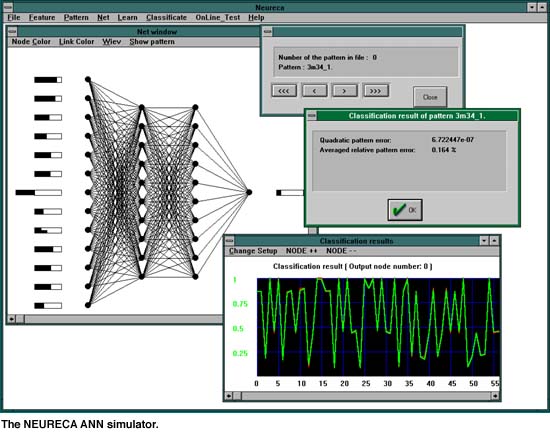Subsymbolic and Hybrid Artificial Intelligence Techniques in Financial Engineering
by László Monostori
The major difficulties in financial engineering, the most computational
intense subfield of finance, are as follows. The problems are
usually multivariate, nonlinear, difficult to model. The information
available is imprecise and incomplete, can have both numerical
and linguistic forms. Chaotic features and changing environment
can be mentioned as further barriers. Obviously, intelligent techniques,
more exactly, techniques of artificial intelligence (AI) research,
became conspicuous in different fields of finance and business.
The range of applications is rapidly increasing and companies
use intelligent systems even to automate parts of their core business.
The fundamental goal of investigations started some years ago
at the SZTAKI was to explore intelligent techniques, including
intelligent hybrid systems and multistrategy learning applicable
in different fields of finance and business.
The potential users of intelligent techniques in finance and business
are corporate finance, financial institutions, and professional
investors. The applications can be grouped as follows: analysis
of financial condition, business failure prediction, debt risk
assessment, security market applications, financial forecasting,
portfolio management, fraud detection and insurance, mining of
financial and economic databases, other (eg macroeconomics) applications.
Intelligent hybrid systems are a very powerful class of computational
methods that can provide solutions to problems that are not solvable
by an individual intelligent technique alone. Perhaps, the most
important class of hybrid systems is the integration of expert
systems and neural networks. Several techniques have emerged over
the past few years spreading from stand-alone models, through
transformational, loosely and tightly coupled models to fully
integrated expert system/neural network models. The integration
of neural and fuzzy techniques, which can be considered as a ‘full
integration’, is an approach of high importance.
Software tools for technical and financial applications have been
developed at the Research Group on Intelligent Manufacturing and
Business Processes (IMBP) at the SZTAKI. The general-purpose neural
network simulator (NEURECA) is to be mentioned first, which provides
an integrated framework including feature definition and real-time
computation; automatic feature selection; various learning algorithms,
classification, estimation of unknown patterns; standardized (DDE)
interfaces to other programs, etc. NEURECA was written in C++
using its object-oriented nature enabling to dynamically vary
the network structure during learning and to implement different
hybrid AI models:
- a hierarchically connected hybrid AI system, HYBEXP where neural networks work on the lower, subsymbolic level coupled with an expert system (ES) on the higher, symbolic level
- the neuro-fuzzy version of NEURECA, which is a symbiotic-type of hybrid AI system, uses a multistrategy learning approach combining self-organized clustering for initializing the membership functions (MBFs), competitive learning for selecting the most important fuzzy rules, and back propagation (BP) learning for fine tuning the MBFs’ parameters
- genetic algorithms supported rule selection within the neuro-fuzzy version of NEURECA.
The applicability of the developed techniques has been demonstrated through case studies:
- ANN-based forecasting of stock prices
- bankruptcy prediction by ANN and neuro-fuzzy techniques
- stock analysis and trading with neuro-fuzzy techniques.
Promising results have been achieved illustrating the benefits of the hybrid AI approaches (eg comprehensive structures, some sort of explanation facility, higher convergence speed, etc.) over conventional methods or pure ANN or ES solutions.

Within SZTAKI, these and related activities in the field of financial
engineering are coordinated by the inter-laboratory Research Group
of Financial Mathematics and Management. Further impulses are
expected from the ERCIM Working Group on Financial Mathematics.
This project is partially supported by the Scientific Research
Fund OTKA, Hungary, Grant No. T023650.
Please contact:
László Monostori - SZTAKI
Tel: +36 1 466 5644
E-mail: laszlo.monostori@sztaki.hu
